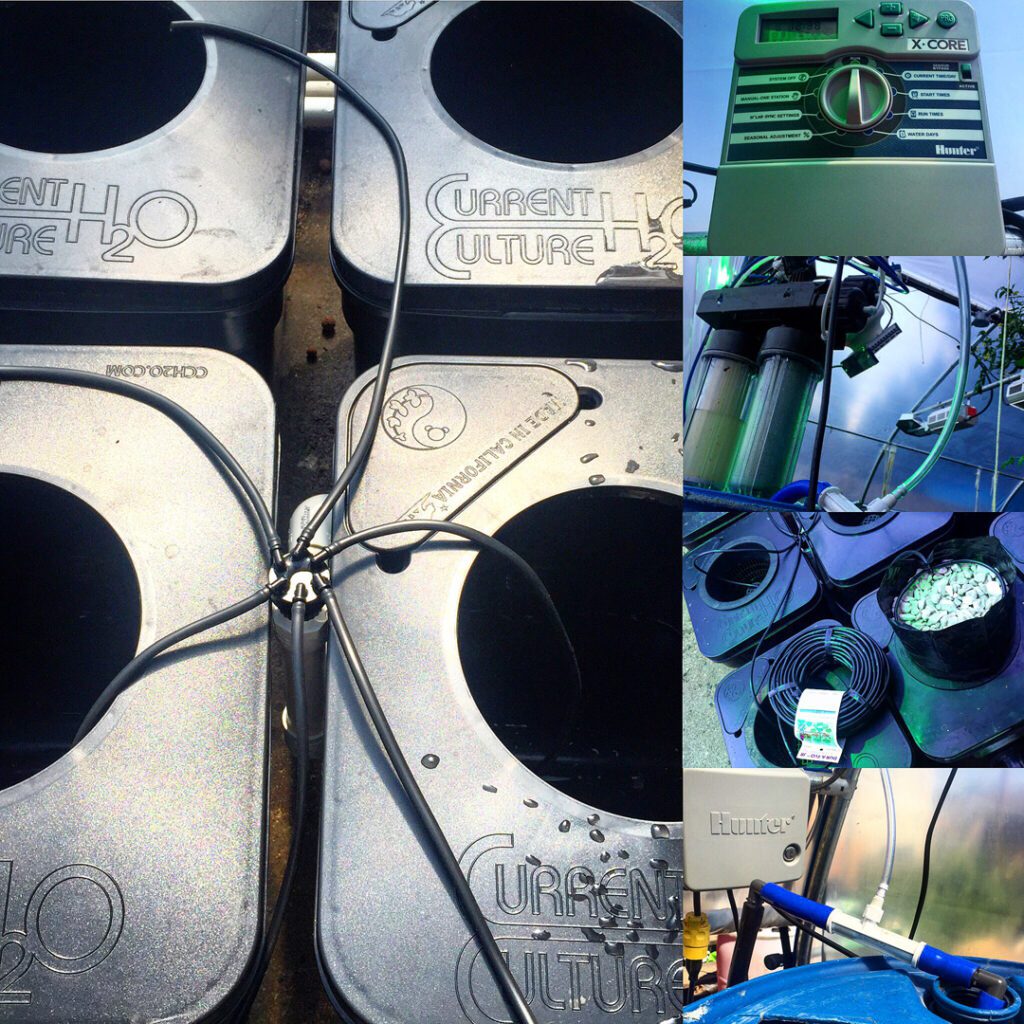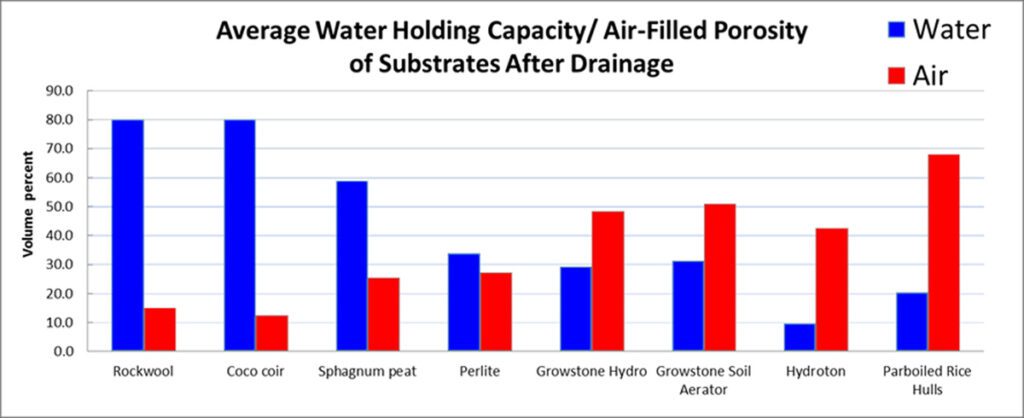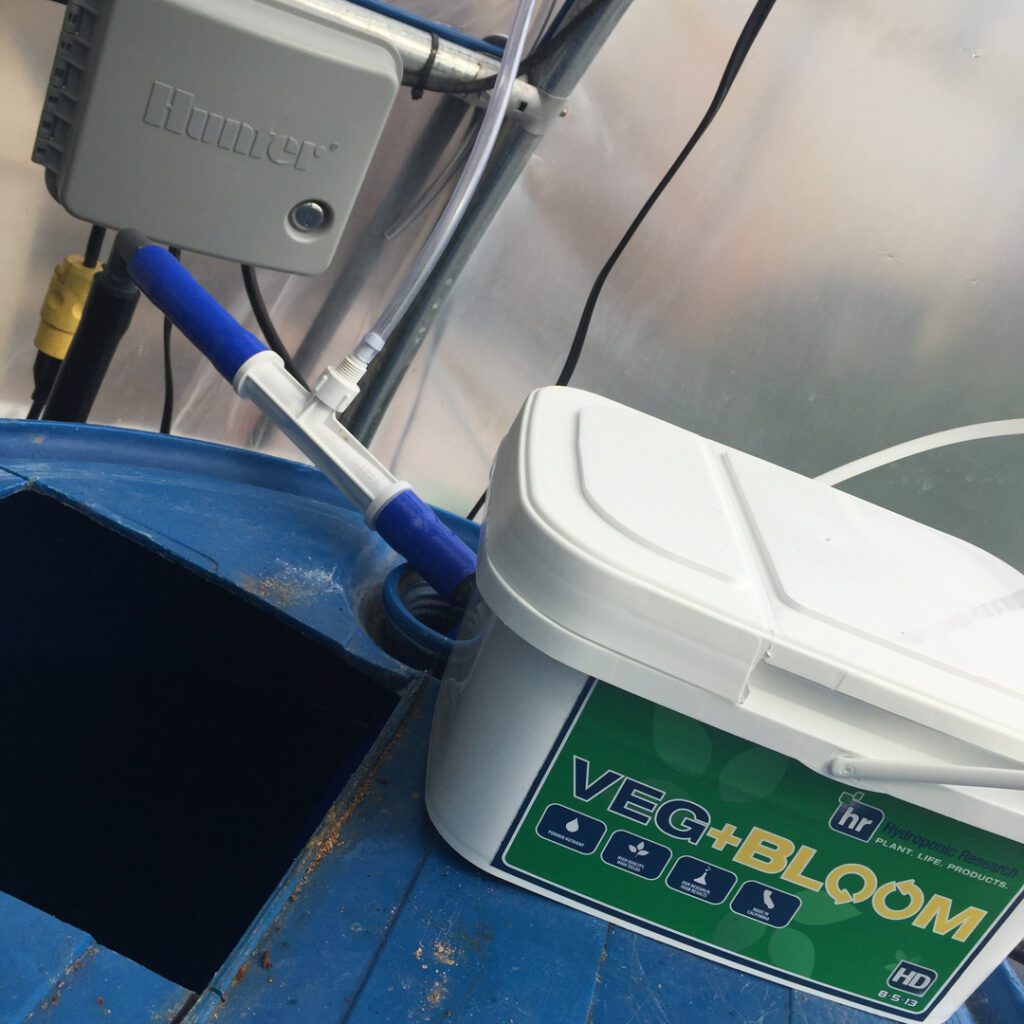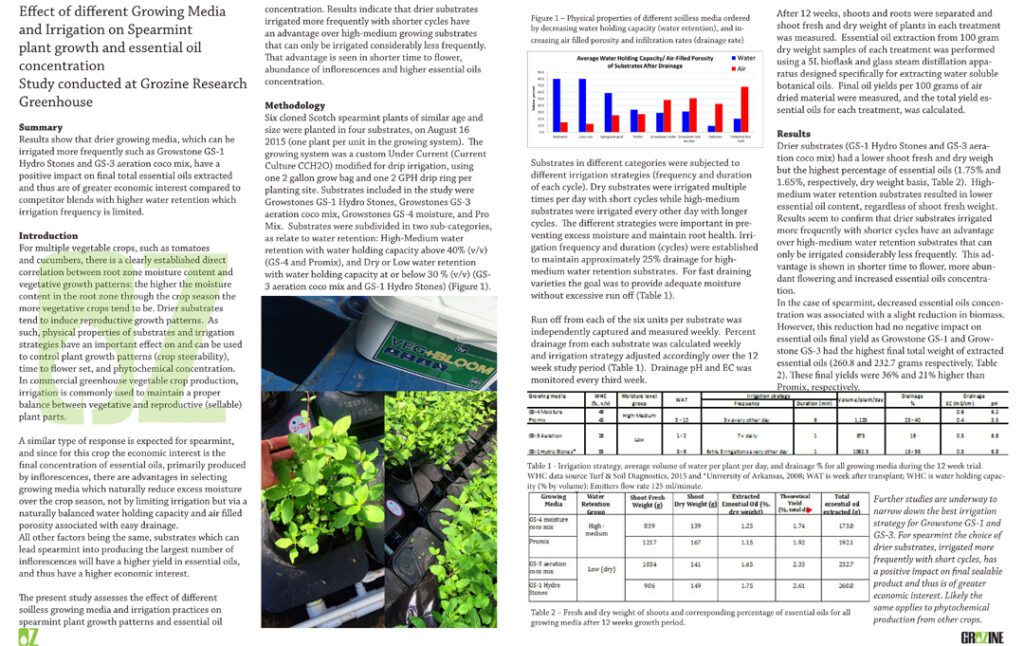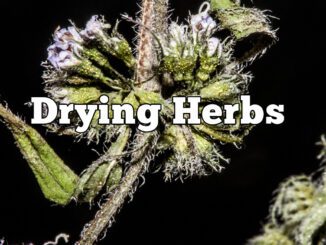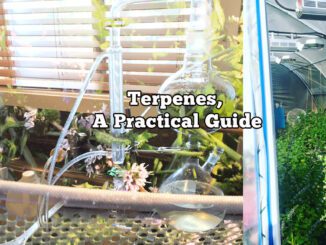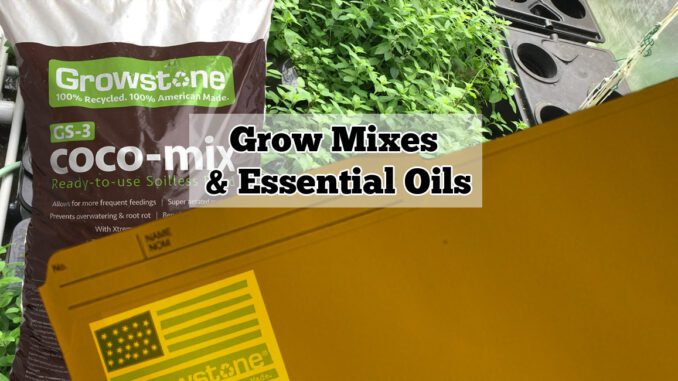
Grow Mixes Increase Essential Oils
Effect of different Growing Media and Irrigation on Spearmint plant growth and essential oil concentration
Study conducted at Grozine Research Greenhouse
Summary
How grow mixes increase essential oils. Results show that drier growing media, which can be irrigated more frequently such as Growstone GS-1 Hydro Stones and GS-3 aeration coco mix, have a positive impact on final total essential oils extracted and thus are of greater economic interest compared to competitor blends with higher water retention which irrigation frequency is limited.
Introduction
For multiple vegetable crops, such as tomatoes and cucumbers, there is a clearly established direct correlation between root zone moisture content and vegetative growth patterns: the higher the moisture content in the root zone through the crop season the more vegetative crops tend to be. Drier substrates tend to induce reproductive growth patterns. As such, physical properties of substrates and irrigation strategies have an important effect on and can be used to control plant growth patterns (crop steerability), time to flower set, and phytochemical concentration. In commercial greenhouse vegetable crop production, irrigation is commonly used to maintain a proper balance between vegetative and reproductive (sellable) plant parts.
A similar type of response is expected for spearmint, and since for this crop the economic interest is the final concentration of essential oils, primarily produced by inflorescences, there are advantages in selecting growing media which naturally reduce excess moisture over the crop season, not by limiting irrigation but via a naturally balanced water holding capacity and air filled porosity associated with easy drainage.
All other factors being the same, substrates which can lead spearmint into producing the largest number of inflorescences will have a higher yield in essential oils, and thus have a higher economic interest.
The present study assesses the effect of different soilless growing media and irrigation practices on spearmint plant growth patterns and essential oil concentration. Results indicate that drier substrates irrigated more frequently with shorter cycles have an advantage over high-medium growing substrates that can only be irrigated considerably less frequently. That advantage is seen in shorter time to flower, abundance of inflorescences and higher essential oils concentration.
Methodology
Six cloned Scotch spearmint plants of similar age and size were planted in four substrates, on August 16 2015 (one plant per unit in the growing system). The growing system was a custom Under Current (Current Culture CCH2O) modified for drip irrigation, using one 2 gallon grow bag and one 2 GPH drip ring per planting site. Substrates included in the study were Growstones GS-1 Hydro Stones, Growstones GS-3 aeration coco mix, Growstones GS-4 moisture, and Pro Mix. Substrates were subdivided in two sub–categories, as relate to water retention: High-Medium water retention with water holding capacity above 40% (v/v) (GS-4 and Promix), and Dry or Low water retention with water holding capacity at or below 30 % (v/v) (GS-3 aeration coco mix and GS-1 Hydro Stones) (Figure 1).
Figure 1 – Physical properties of different soilless media ordered by decreasing water holding capacity (water retention), and increasing air filled porosity and infiltration rates (drainage rate)
(Turf & Soil Diagnostics, 2015; GS-1 data from University of Arkansas, 2008)
Substrates in different categories were subjected to different irrigation strategies (frequency and duration of each cycle). Dry substrates were irrigated multiple times per day with short cycles while high-medium substrates were irrigated every other day with longer cycles. The different strategies were important in preventing excess moisture and maintain root health. Irrigation frequency and duration (cycles) were established to maintain approximately 25% drainage for high-medium water retention substrates. For fast draining varieties the goal was to provide adequate moisture without excessive run off (Table 1).
Run off from each of the six units per substrate was independently captured and measured weekly. Percent drainage from each substrate was calculated weekly and irrigation strategy adjusted accordingly over the 12 week study period (Table 1). Drainage pH and EC was monitored every third week.
Table 1 – Irrigation strategy, average volume of water per plant per day, and drainage % for all growing media during the 12 week trial.
WHC data source Turf & Soil Diagnostics, 2015 and *University of Arkansas, 2008; WAT is week after transplant; WHC is water holding capacity (% by volume); Emitters flow rate 125 ml/minute.
After 12 weeks, shoots and roots were separated and shoot fresh and dry weight of plants in each treatment was measured. Essential oil extraction from 100 gram dry weight samples of each treatment was performed using a 5L bioflask and glass steam distillation apparatus designed specifically for extracting water soluble botanical oils. Final oil yields per 100 grams of air dried material were measured, and the total yield essential oils for each treatment, was calculated.
Results
Drier substrates (GS-1 Hydro Stones and GS-3 aeration coco mix) had a lower shoot fresh and dry weigh but the highest percentage of essential oils (1.75% and 1.65%, respectively, dry weight basis, Table 2). High-medium water retention substrates resulted in lower essential oil content, regardless of shoot fresh weight.
Table 2 – Fresh and dry weight of shoots and corresponding percentage of essential oils for all growing media after 12 weeks growth period.
|
Growing Media |
Water Retention Group |
Shoot Fresh Weight (g) |
Shoot Dry Weight (g) |
Extracted Essential Oil (%, dry weight) |
Theoretical Yield (%, total dry weight) |
Total essential oil extracted (g) |
| GS-4 moisture coco mix |
High – medium |
839 |
139 |
1.25 |
1.74 |
|
| Promix |
1217 |
167 |
1.15 |
1.92 |
192.1 |
|
| GS-3 aeration coco mix |
Low (dry) |
1034 |
141 |
1.65 |
2.33 |
232.7 |
| GS-1 Hydro Stones |
906 |
149 |
1.75 |
2.61 |
260.8 |
Results seem to confirm that drier substrates irrigated more frequently with shorter cycles have an advantage over high-medium water retention substrates that can only be irrigated considerably less frequently. This advantage is shown in shorter time to flower, more abundant flowering and increased essential oils concentration.
In the case of spearmint, decreased essential oils concentration was associated with a slight reduction in biomass. However, this reduction had no negative impact on essential oils final yield as Growstone GS-1 and Growstone GS-3 had the highest final total weight of extracted essential oils (260.8 and 232.7 grams respectively, Table 2). These final yields were 36% and 21% higher than Promix, respectively.
Further studies are underway to narrow down the best irrigation strategy for Growstone GS-1 and GS-3. For spearmint the choice of drier substrates, irrigated more frequently with short cycles, has a positive impact on final sellable product and thus is of greater economic interest. Likely the same applies to phytochemical production from other crops.
DOWNLOAD Report, Print Quality PDF



